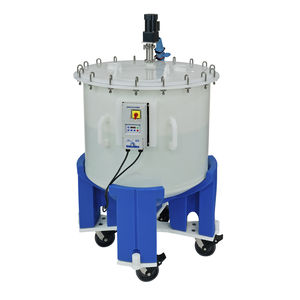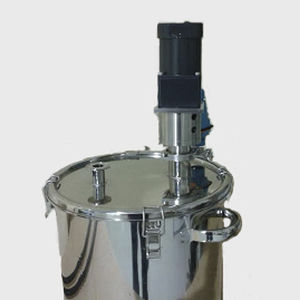
- Packing - Handling - Logistics
- Storage
- Water storage tank
- White Mountain Process
Water storage tank industrialfor pharmaceutical applicationsultra high-purity
Add to favorites
Compare this product
Characteristics
- Function
- water storage
- Applications
- industrial, for pharmaceutical applications, ultra high-purity
Description
Highly purified water is required in a number of industrial and medical applications, especially in pharmaceuticals production, electronics manufacturing and water for injection (WFI) such as for water used in medical intravenous solutions. The range of methods used to produce high-purity water is extensive and may involve one or a series of steps from among the following processes, for example:
• Chemical treatment
• De-ionization
• Distillation
• Vapor-compression distillation
• Filtration
• Forward osmosis
• Reverse osmosis
• Ultraviolet-light sterilization
Technical standards for purified water are set by ASTM, ISO and USP, among other bodies.
It may be surprising to some that purity standards for the electronics industry often exceed those of WFI by a wide margin. Also, the limits for endotoxin and bacteria in Type A laboratory water are eight and ten times lower than WFI, respectively. ASTM Type 1.2 water for microelectronics has microbial limits similar to lab water, with total organic carbon and conductivity specifications far below those for WFI as well.
Contaminants to be removed during purification processes include suspended and dissolved solids such as: pathogens, other micro-organisms, salts and endotoxins (a heat-stable toxin present in bacterial cell walls that is released if the cell wall disintegrates.) Admixed liquids must be eliminated and dissolved gasses may also require removal.
Keeping it Clean
Once the water is made pure, it is essential that it remains pure. As the purified water is pumped and stored, it comes into contact with a variety of materials and process conditions.
Catalogs
No catalogs are available for this product.
See all of White Mountain Process‘s catalogsOther White Mountain Process products
Mixing Tanks & Engineered Systems
*Prices are pre-tax. They exclude delivery charges and customs duties and do not include additional charges for installation or activation options. Prices are indicative only and may vary by country, with changes to the cost of raw materials and exchange rates.






